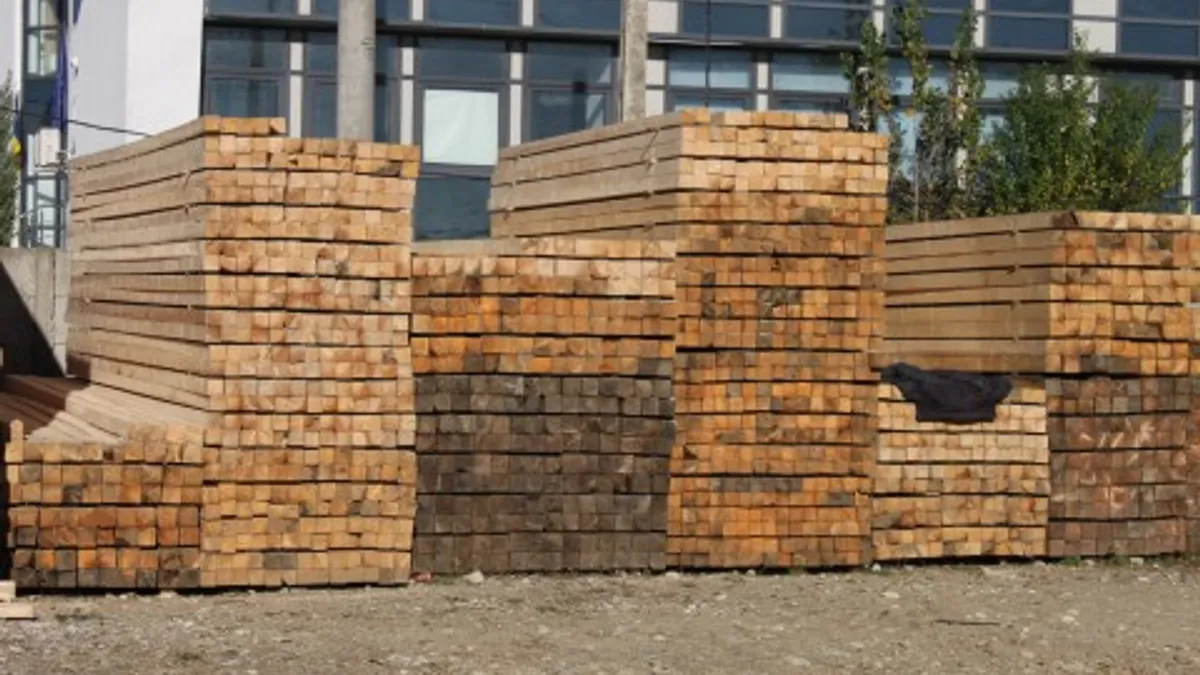Dive Brief:
- Following the sudden, dramatic price spikes on an array of building materials in 2021, the Associated General Contractors of America has appealed to President Joe Biden to take action to ease the skyrocketing cost of lumber.
- In a Feb. 18 letter, AGC CEO Stephen Sandherr asked Biden to urge domestic lumber producers to ramp up production to address growing shortages, as well as to make the crafting of a new softwood lumber agreement with Canada a top priority of his administration.
- “The extreme runup in recent months for the price of all categories of lumber has created a hardship for contractors that were called upon earlier in the pandemic to create spaces vitally needed for care of patients, social distancing of workers and the public,” Sandherr wrote. “AGC believes the White House can play a constructive role in mitigating this growing threat.”
Dive Insight:
Over the past year, softwood lumber prices have spiked 73%, according to the Producer Price Index. In 2017, former President Donald Trump implemented tariffs of up to 24% on softwood lumber imports from Canada, a factor contractors say is still impacting lumber prices.
With its call to focus on a new deal with Canada, Sandherr’s letter seemed to be aimed at mitigating the impacts of those tariffs now, as Biden has spent much of his first month in office unraveling Trump’s legacy via executive orders.
“While lumber is sometimes considered a product that is important only in single-family house construction and remodeling, in reality lumber and other wood products are used in every type of building construction,” Sandherr wrote. “The volatility of lumber prices and the impossibility of pinning down future delivery dates is making it extremely difficult for contractors to provide bid prices or completion times for upcoming projects.”
But cost increases for contractors haven’t just been limited to lumber. Iron and steel scrap has surged 50.8% in the last 12 months, including a 25.8% jump from November to December, followed by another 20.6% jump from December to January, according to January’s PPI report.
Overall, the PPI for cost inputs to new nonresidential construction — what contractors pay to get a job done — jumped 2.5%, while the price contractors say they would charge for specific jobs inched up just 0.2%.
That widening spread of costs versus bid prices by a factor of more than 12 has alarmed industry watchers.
“Left unchecked, these rising materials prices threaten to undermine the economic recovery by inflating the cost of infrastructure and economic development projects,” Sandherr said in a news release ahead of the letter. “Widespread harm is caused by maintaining tariffs on products that so many Americans need to improve their houses, modernize their infrastructure and revitalize their economy.”














